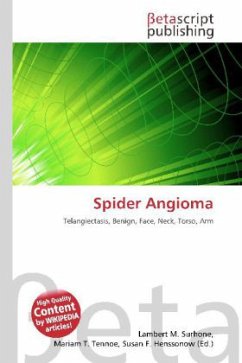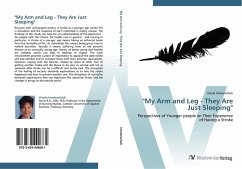Please note that the content of this book primarily consists of articles available from Wikipedia or other free sources online. A spider angioma (also known as a nevus araneus, spider nevus, vascular spider, and "Spider telangiectasia") is a type of telangiectasis found slightly beneath the skin surface, often containing a central red spot and reddish extensions which radiate outwards like a spider''s web. They are common and benign, present in around 10-15% of healthy adults and young children. Spider angiomas are commonly found on the face, neck, upper part of the trunk and arms. They may also be present on the backs of the hands and fingers in young children. Most, however, are a result of liver disease. They are due to failure of the sphincteric muscle surrounding a cutaneous arteriole. The central red dot is the dilated arteriole and the red "spider legs" are small veins carrying away the freely-flowing blood. If momentary pressure is applied, it is possible to see the emptied veins refilling from the centre. No other angiomas show this phenomenon.








